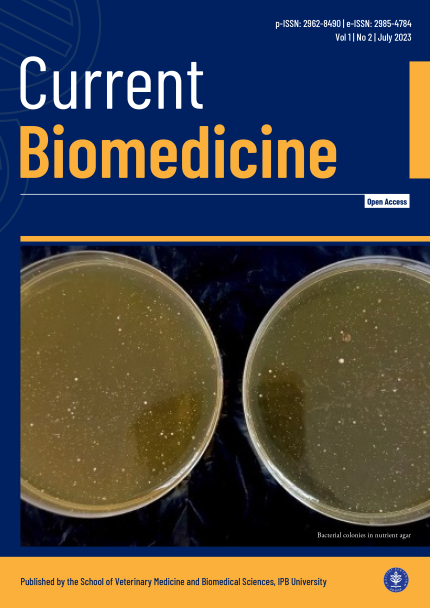Effect of the partial solar eclipse on the behavior and activity of rats
Abstract
Circadian rhythm is the adaptation response of animals against light alteration that affects various behavioral and physiological responses. Bright light is a danger signal for nocturnal animals because it exposes them more to predators. This research aimed to study the changes in the behavior of rats during the partial solar eclipse (PSE) period. The PSE period occurred across Bogor, Indonesia, on 9 March 2016. The PSE started at 06.19 AM, peaked at 07.21 AM, and ended at 08.30 AM. The light level decreased since the early solar eclipse, then dropped significantly at the peak period. The activities of six mature male Sprague Dawley rats were measured using Opto-Varimex-5 Auto Track System during the PSE period. The measurements were repeated one day after the PSE period as the non-PSE period. There were significant differences (P<0.05) in stereotypic time, burst of stereotypic movement, and horizontal count in the early, peak, and end periods of the PSE period compared with the values at the same time of the non-PSE period. The activities of rats changed during the PSE period. Rats did not rest as in their normal nocturnal behavior during darkness but were more active and stressed because of the rapid change in light level during the PSE period.













